Toimialayhteisöt
Toimialayhteisö:
Metalliteollisuuden Standardisointiyhdistys
Komitea: ISO/TC 117
(Fans)
Alkuperä: ISO
Määräpäivä: 2026-12-28
This part of ISO 27327 establishes uniform methods for laboratory testing of air curtain units to determine aerodynamic performance in terms of airflow rate, outlet air velocity uniformity, power consumption and air velocity projection, for rating or guarantee purposes. This part of ISO 27327 is not applicable to the specification of test procedures to be used for design, production or field testing.
